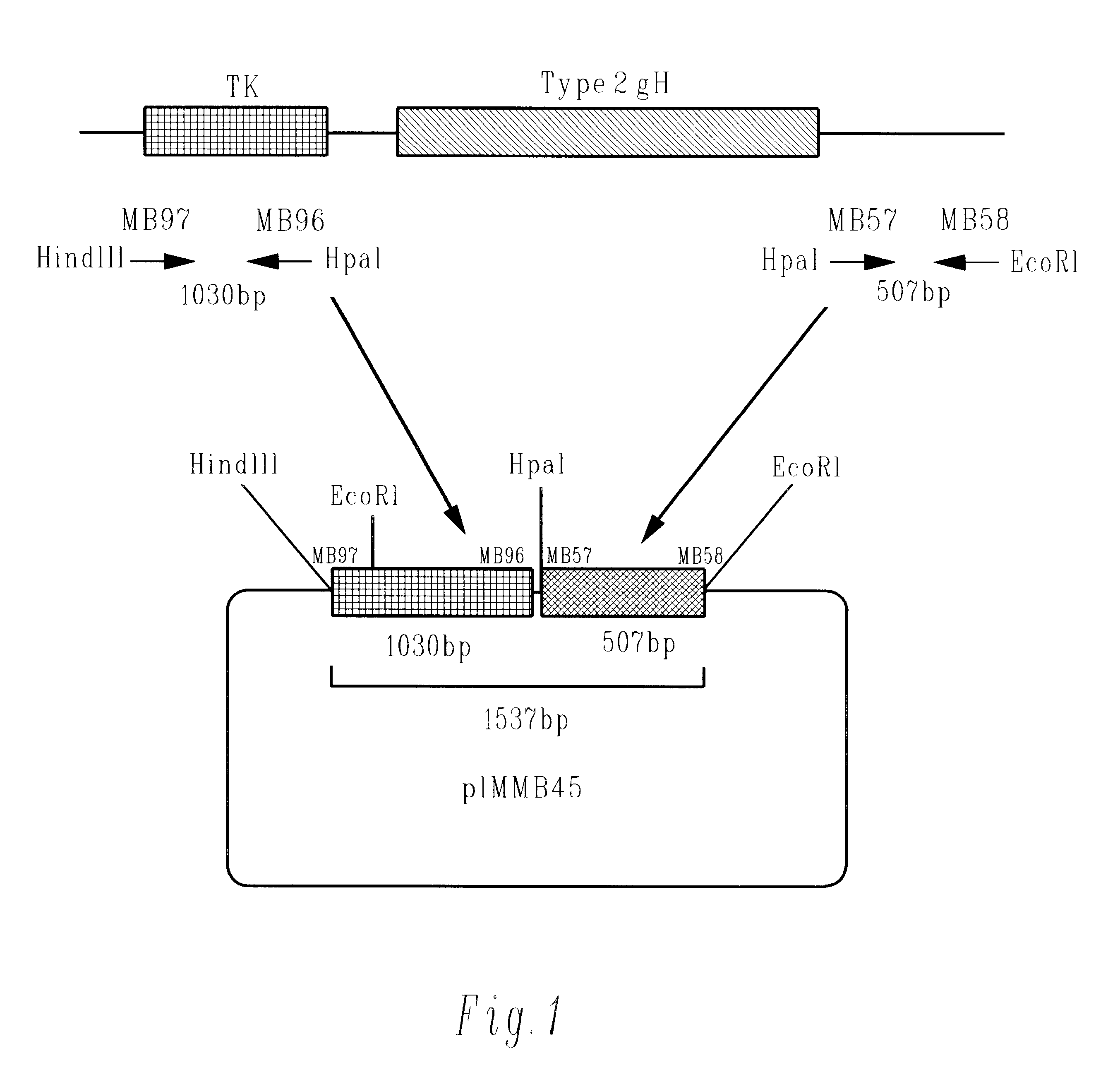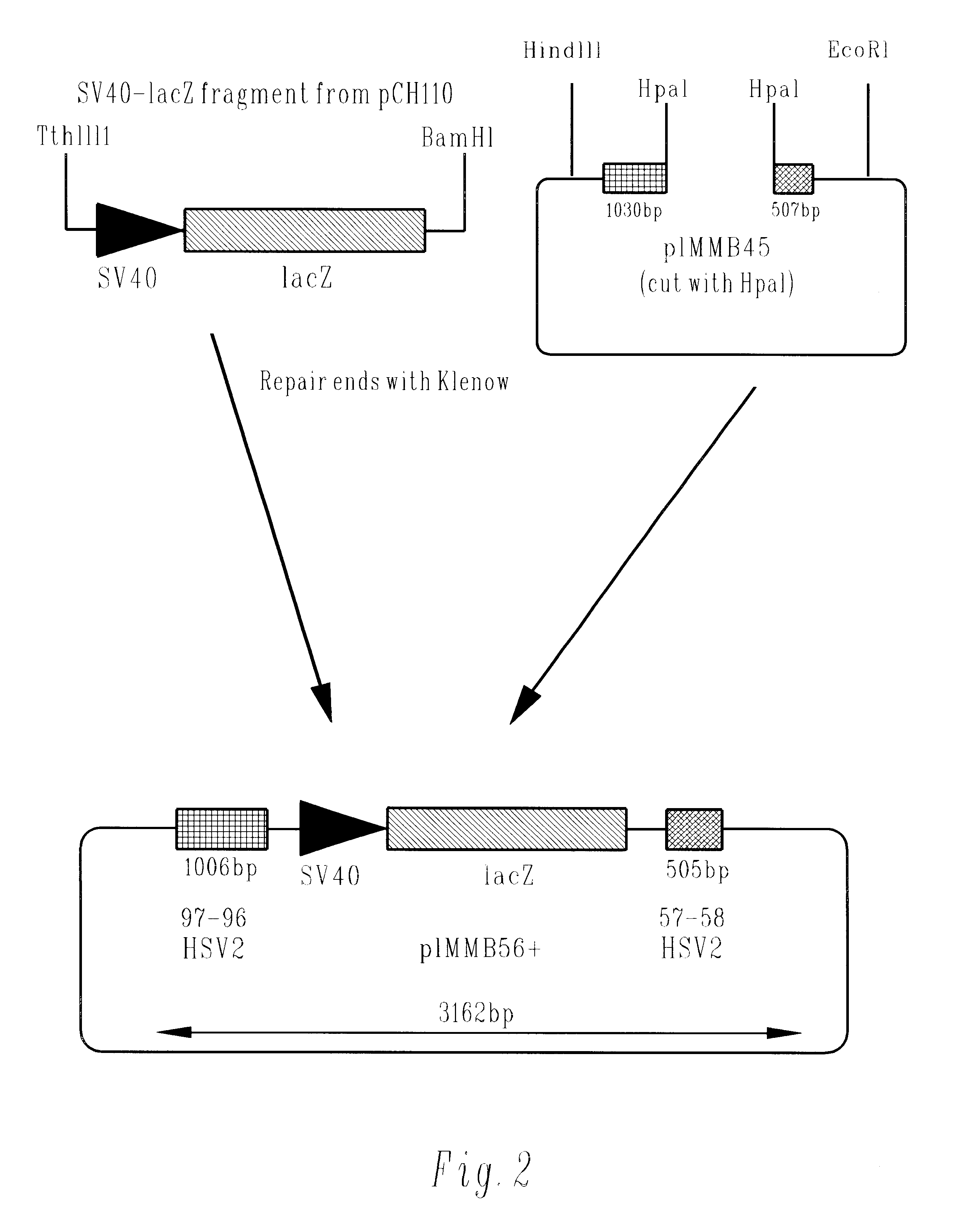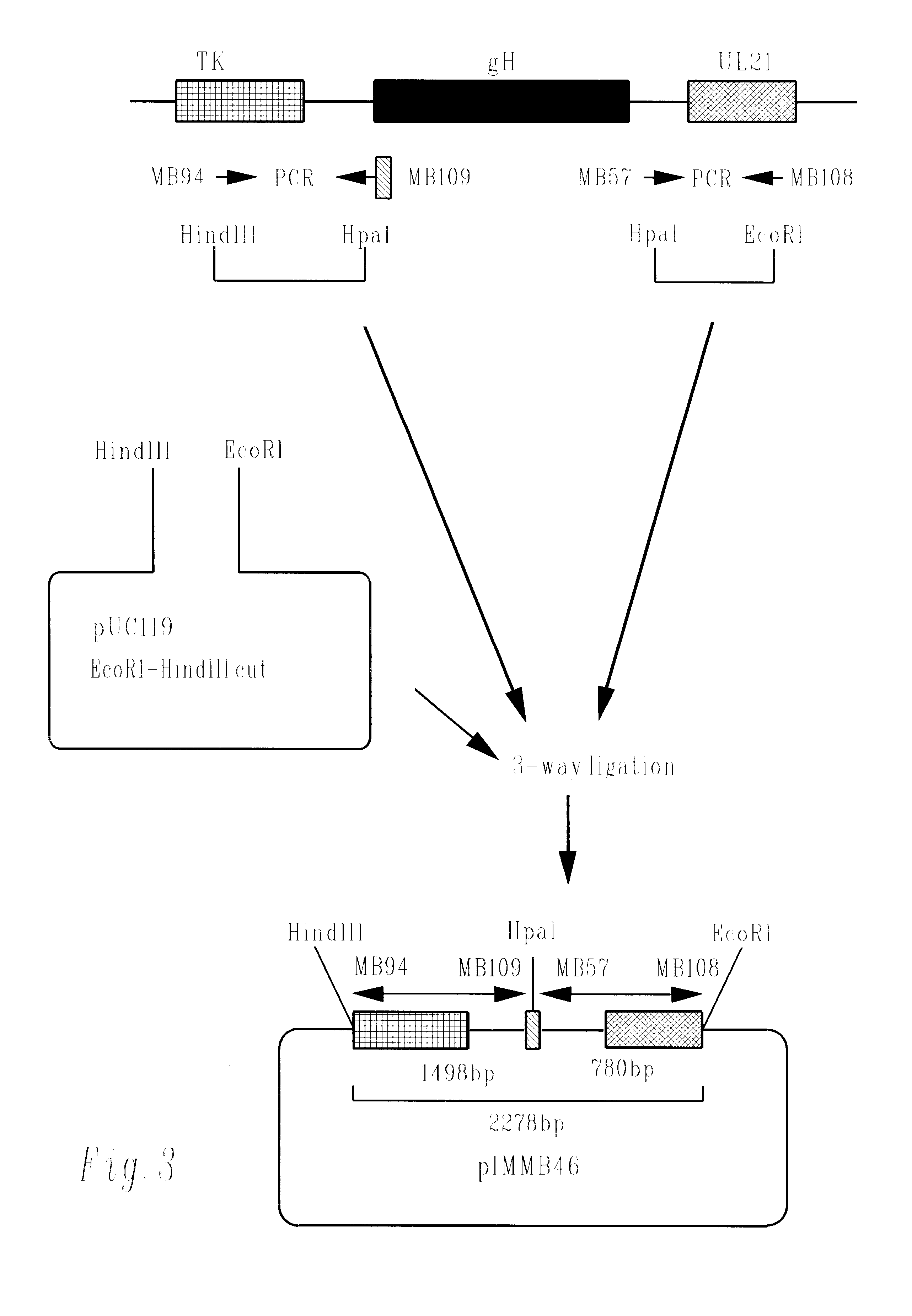Methods of gene therapy using herpes viral vectors expressing GM-CSF
- Summary
- Abstract
- Description
- Claims
- Application Information
AI Technical Summary
Problems solved by technology
Method used
Image
Examples
Embodiment Construction
According to the present invention, as described in further detail below, a genetically inactivated (genetically disabled) mutant virus vaccine provides an useful carrier for genes encoding immunomodulatory proteins, and can be thus used as a virus vector. The virus vaccine can infect cells e.g. of a vaccinated subject leading to intracellular synthesis of viral antigens as well as of the immunomodulatory proteins. Thus the immune response to the virus can in certain examples of the invention be potentiated, whether it is made against viral-encoded antigens or in response to the immunomodulatory protein encoded by the virus. If the genetically inactivated vaccine is also acting as a vector for delivery of foreign antigens, then the immune response against the foreign antigen can also be enhanced.
Since the vaccine virus can undergo only a single cycle of replication in cells of the vaccinated host, however, production of the immunomodulatory proteins will be confined to the site of v...
PUM
| Property | Measurement | Unit |
|---|---|---|
| Immunogenicity | aaaaa | aaaaa |
| Cytotoxicity | aaaaa | aaaaa |
Abstract
Description
Claims
Application Information
 Login to View More
Login to View More - R&D
- Intellectual Property
- Life Sciences
- Materials
- Tech Scout
- Unparalleled Data Quality
- Higher Quality Content
- 60% Fewer Hallucinations
Browse by: Latest US Patents, China's latest patents, Technical Efficacy Thesaurus, Application Domain, Technology Topic, Popular Technical Reports.
© 2025 PatSnap. All rights reserved.Legal|Privacy policy|Modern Slavery Act Transparency Statement|Sitemap|About US| Contact US: help@patsnap.com



